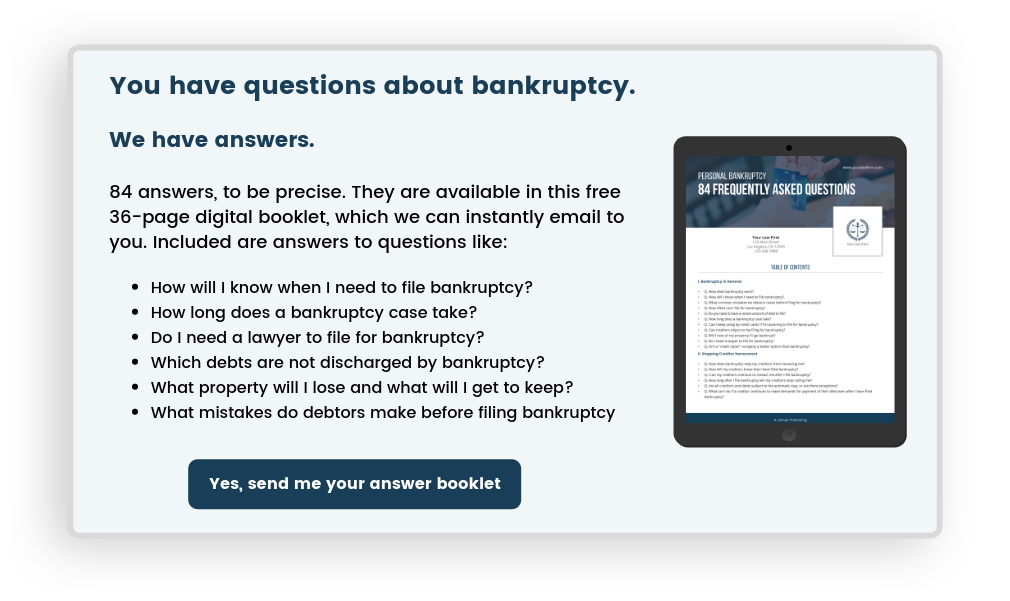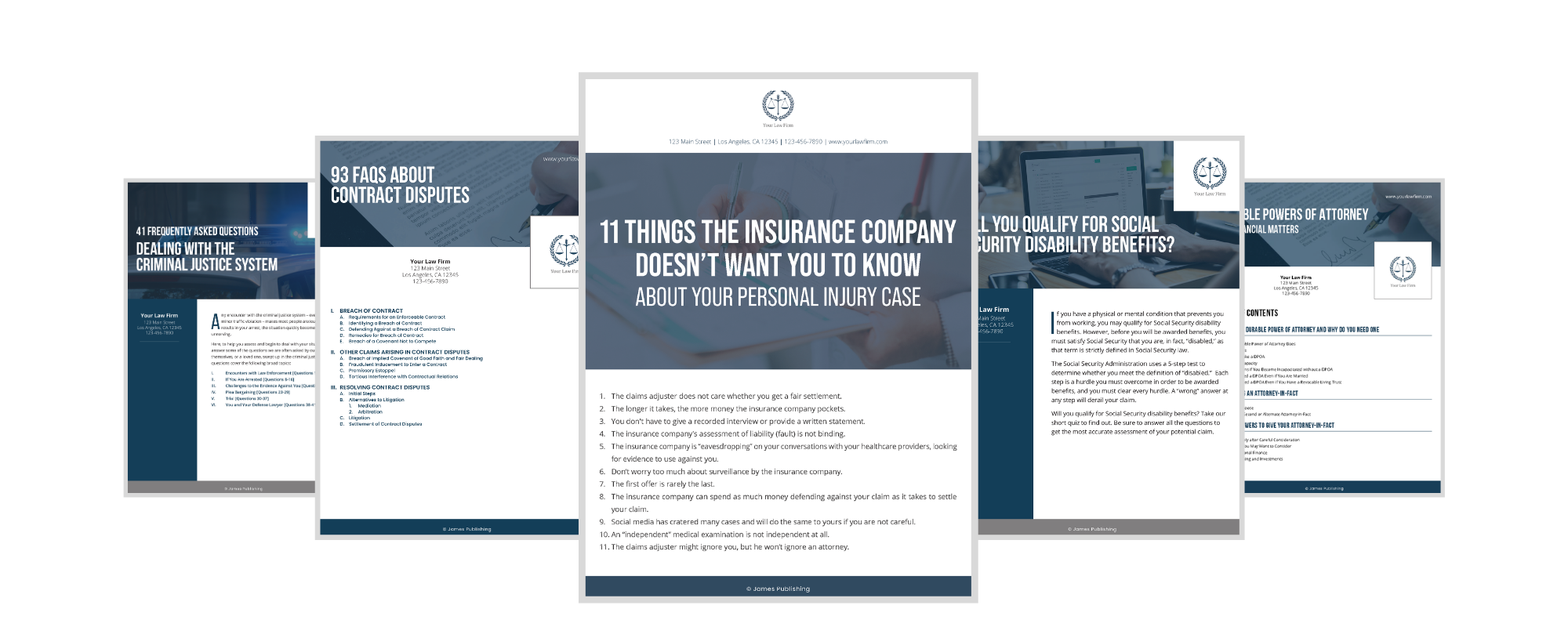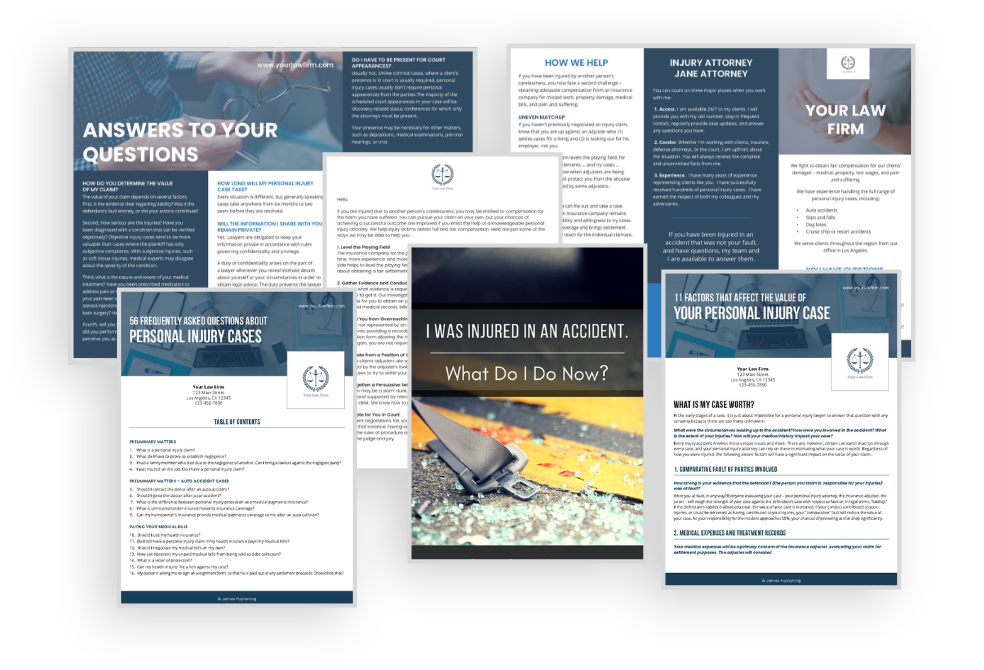
How Do I Impress My Law Firm’s Leads?
How Do I Impress My Law Firm’s Leads?
Half of the competitive battle in turning law firm leads into clients is standing apart from the other lawyers the prospect has reached out to.

With voice search, Google My Business, and click-to-call, it is so easy for prospects to quickly generate a list of qualified local lawyers that they frequently contact more than one. The first law firm to impress the prospect is generally the one to land the office appointment and a signature.
How do you stand apart from your competitors? Here are seven ways. All but one can be created once and used forever.
Starting Strong
1. Lead magnet on your website.
A proven technique that online businesses have been using for years but law firms have ignored is to offer an attractive piece of content on your website using what is called an exit-intent popup.
The exit-intent popup appears when your visitors move their cursors to the website address line, which indicates they are preparing to leave your site. The popup offers an attractive piece of content in exchange for contact information and answer to a qualifying question.
We use an extensive set of frequently-asked questions on our popups, and inquire about the urgency of the legal issue. If the FAQ downloader says the issue is urgent, we call and ask to set an office appointment.
This popup with telephone call generates additional appointments from the same website traffic.

2. Shock-and-awe package.
Every prospect who calls your office, completes your website form, and downloads your lead magnet should receive your digital shock-and-awe package. The best prospects should also receive a hard copy of your package (more on this in the next section).
What should your shock-and-awe package consist of? We use a 200-page book, two educational booklets, a detailed practice brochure, and explanatory cover letter.
The number of lawyers with shock-and-awe packages is miniscule, so the odds are high that none of your competitors will be sending comparable materials to your prospects.
Converting Leads to Appointments
3. Call to offer hard copy and qualify.
We have had excellent results calling leads to offer a free print version of the content they downloaded. Most will say yes to our offer and confirm their physical address. We then inquire about their situation and seek to set appointments with those who are well qualified.
You can readily implement the same approach using your book, FAQs, or other content you offer on your website or through webinars or eblasts. Try it; the technique works well.
4. Nurturing series.
Every lead name you obtain, however you obtain it, should receive a lengthy email series that explains in detail how you help.
Walk your prospects step-by-step through the legal process they will experience when working with you. Empathize with their problem, explain how resolution will occur, and then describe how much better things will be when the problem is resolved. Offer to help and provide your contact information.
Our series run 15-18 letters long, and are sent automatically. The pace varies by specialty, but one email per week is the average. The emails generate appointments that otherwise would be unlikely to occur, for most leads are quick to forget who they reached out to.
Converting Appointments to Clients
5. Office materials.
Your content collection is most effective when tailored to the prospect.
For example, one of our injury-attorney subscribers had an appointment with a seriously-injured prospect who wavered during the appointment and during the follow-up call said he was going to negotiate with the insurance company himself.
The attorney then sent our booklet “How Insurance Companies Work” to the prospect. A week later the prospect retained the attorney, saying he now understood that he was ill-equipped to handle the matter himself.
In addition to sending targeted booklets to wavering prospects, you can display relevant booklets in your lobby, provide them at your front desk, and personally hand them out at the conclusion of your appointment. The key to success is to provide ones directly on point with the prospect’s questions, concerns, or objections.

Avoiding Buyer’s Remorse
6. Welcome kit.
This a modified version of your shock-and-awe package and serves the same purpose — create a positive initial impression. You want your new clients to speak favorably of you and your work, and a well-crafted welcome kit will get them doing so.
In our kits we include a collection similar to the shock-and-awe package, but use booklets that cover questions arising during representation rather than before retention. The cover letter explains what will occur next, and how the client will be updated throughout the matter.
As with many of these techniques, you can create your welcome kit once and use it without modification for years.

7. Reassurance series.
Salesmanship does not end once a client is signed … especially if there is a time gap between signature and visible work. Lawyers are notoriously poor at communicating the work being done behind the scenes.
The easy solution is to create a series of emails that explains what is occurring, and then automatically send these emails at the pace of one per week to every new client. The series, consistent with its name, will reassure clients that work is being done on their matter, all is well, and they don’t need to call your office to ask what is occurring.
We recommend that you set yourself the goal of creating one of these items every quarter. If you have decent website traffic, say several hundred unique visitors per month, adding a popup and placing follow-up calls will prove productive.
Alternatively, you can begin writing educational booklets that can be used multiple ways: as tailored sends and handouts, as part of a shock-and-awe package or welcome kit, and as waiting room reading.
But do begin … before your competition does.
Ready for a demo of our Referral System?








